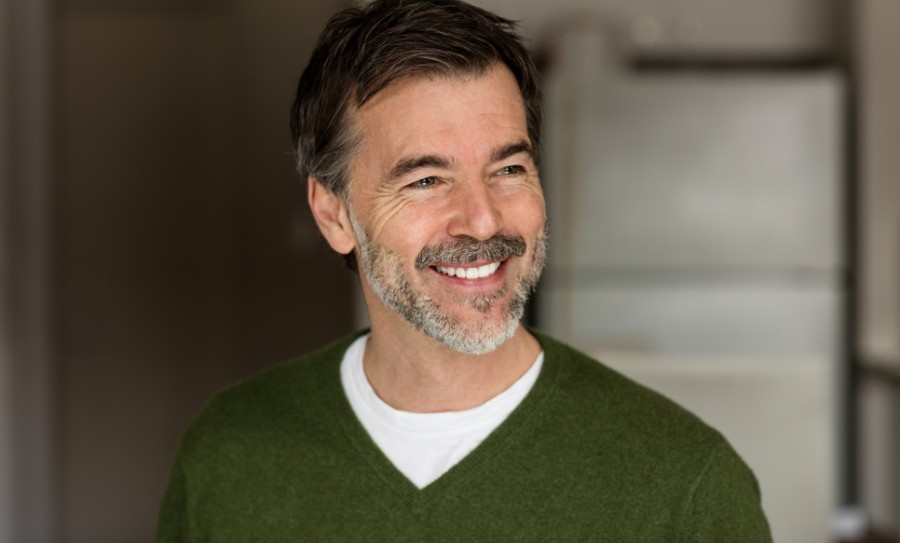
Your hair is part of what makes you unique, and when it begins to thin or fall out, it can be devastating. You may feel powerless, but the great news is that there are a range of options available for restoring your hair. Hair restoration and replacement technology have rapidly evolved over the past few decades to provide patients with ways of reversing hair loss and regaining confidence in their appearance.
At ENT and Allergy Associates, a subdivision of ENT and Allergy Associates, our fellowship-trained surgeons understand that truly successful procedures must serve both the functional as well as cosmetic aspects of facial plastics. That’s why each physician specializes in surgery that reconstructs as well as beautifies. It is that combination of care that sets us apart from others. We offer hair restoration procedures, including micro follicular restoration, and can help restore your hair—and your confidence.
About Micro Follicular Restoration
Micro follicular restoration is the most effective technique of transplanting hair from one area to another to create the appearance of a natural hairline and to add volume to areas where there is little or no hair. Even in the most extreme balding patterns, a permanent rim of hair exists on the sides and back of the head. This hair seems to be unaffected by the balding process.
In micro follicular hair restoration, a strip of skin containing this permanent hair is removed from the back of the head. The scalp will be stitched together again after the removal of the strip and will not have obvious scarring. The hair follicles are carefully removed from this piece of skin and harvested. They are placed into very small surgical sites in the balding areas of the scalp. After the transplant, the hair harvested will begin to grow in approximately 3 to 6 months and continue throughout the natural life of the patient.
During your visit with ENT and Allergy Associates, you will be welcomed into our offices and will first meet our Cosmetic Care Coordinators, who will briefly speak to you about your concerns and expectations. Our surgeons will then meet with you and will perform a thorough head and scalp exam. They will confirm that there are no medical circumstances that would create any issue with either medical treatment for hair loss or a transplant procedure.
The surgeons will provide you with medical and surgical options for hair restoration—clearly outlining the expected outcome. They will explain the ultimate goal of the procedure and discuss the physiology of hair loss and hair growth. Photographs will be taken to document the initial hairline and show remarkable improvement after the restorative process.
When you leave, you will have a new and improved outlook on restorative hair surgery and can truly make an informed decision about proceeding with this very personal gift.
To learn more about our hair transplant and hair restoration procedures, reach out to your local ENT and Allergy Associates today to schedule a consultation!

Hair transplantation is more expensive than some alternative treatments. However, this procedure has permanent results, and most patients will consider this an investment in their future happiness. The pricing for this procedure starts at $3,000 and will vary greatly depending on the number of sessions and areas needing treatment.
The number of sessions will depend on the following:
- Amount of area of the scalp being treated
- Number of grafts necessary
- The density of the grafts
The estimate of the number of grafts and areas needing to be addressed can be discussed during your free consultation. We provide a natural-looking, permanent solution to men and women with thinning hair or baldness. Our outpatient procedure with fine follicular unit micrografts provides a natural-looking hairline that lives and grows indefinitely!
Frequently Asked Questions About Hair Transplants
If you’re unfamiliar with micro follicular restoration, the AFP team is ready to answer any questions you may have. We’ve helped many men and women regain their confidence simply by giving them back something they had when they were younger: a full head of hair.
Below you will find answers to some of the common questions we receive about hair transplantation:
Will my hair look pluggy like a doll’s head as was seen years ago?
Absolutely not. The new technique of placing individual hair follicles has eliminated the fake or transplanted look. The goal of surgery today is to create a very natural appearance to the front hairline and to reframe the face by increasing the hair density up in front.
Does the procedure hurt? I am not much into needles.
The procedure is done under local and only the first injection is uncomfortable. Our gentle injection technique creates complete numbness to the scalp – both in the donor area where the hair is taken from and the sites of the head that will receive new hair follicles. We provide you with sedation medicine to take along with a few pain pills prior to the start of your procedure and this in conjunction with the local anesthesia ensures a very comfortable day.
When can I return to work? How will the head look on the day after surgery?
You will go home with a small dressing on your head, and you will be asked to remove it the next morning prior to gently washing the scalp. Often, we will see you in the office the day after surgery and remove the bandage for you. Wearing some head cover for the first 3-4 days is not unreasonable but not necessary. You will have small scabs that will fall off within the week.
After surgery, what kind of activity is allowed? Can I mow my grass and do standard household chores?
For the first 4 days post-procedure, we ask the patient to refrain from heavy physical activity that would elicit either sweating or bleeding. Day 4 usually marks the time in which potential troubles usually are minimal. Sutures in the back of the scalp where hair tissue was taken for the transplant procedure are removed on day 7 and all normal activities are resumed by day 8.
So if I have my hair transplanted July 1 will I have new hair for a wedding in October?
Hair follicles are transplanted in their entirety but do undergo a shock phase in which they will hibernate and not begin to grow until the 3rd or 4th month. The hair follicles will usually begin to grow at the 3–4-month mark, but density changes and new hair lines are not usually realized until the first year.
Will one session provide me with a full head of hair, or will I need more than one surgery?
In general, all people who are seeking hair replacement surgery have at least a 50% decreased density that will require two separate sessions for correction. Some who are in their early to mid-40s with loss in the front hairline only are happy with just one session, but two sessions are generally suggested and required for most people to create the results that are being sought. Donor hair is the most limiting factor – because the hair that is moved from the back to the front is finite – our ultimate result and the number of sessions are dependent on how much hair is available to move and transplant elsewhere.
Patient Stories
-
"Very personalized service from staff to Doctor especially Dr. Alaxander S."
- Shabbir A. -
"Beyond expectations, I felt comfortable, at ease, and left without any questions unanswered, knowing that his approach to my situation was working and the right course of treatment."
- R.E. -
"I recommend this place. Excellent staff. Fully prepared specialist. A place where you breathe peace."
- Johanna G.
Less Sick Days, More Living

